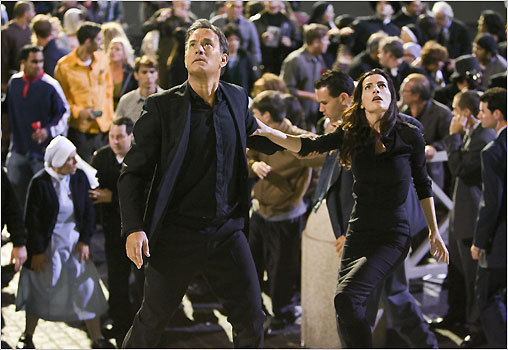 Overall Impression – I felt guilty for enjoying this. Kinda like after a Happy Meal.
Overall Impression – I felt guilty for enjoying this. Kinda like after a Happy Meal.
THE FOUR QUESTIONS
Who’s your main character? – Robert Langdon.
What’s he trying to accomplish? – Professional: rescue four kidnapped ‘preferiti’ and find an anti-matter bomb before it destroys Vatican city. Personal: overcome the stigma resulting from his controversial religious discoveries. Private: figure out whether an academic like him can have faith in God.
Who’s trying to stop him? – An assassin, the Camerlengo, the chief of the Swiss Guard.
What happens if he fails? – Vatican City will be destroyed, thousands will die, and turmoil will sweep the religious world.
THE FOUR ARCHETYPES
Orphan – Langdon is brought to Vatican city, where his academic approach to religion puts him at odds with the locals.
Wanderer – Langdon is brought up to speed on the case, learning that four ‘preferiti’ (potential Popes) have been kidnapped, and that an anti-matter device has been stolen. Langdon meets Vittoria, a scientist who explains that anti-matter contains what science believes to be the spark of creation. Langdon deduces that the Illuminati are behind the kidnappings, and that they intend to destroy Vatican City by detonating an anti-matter bomb, demonstrating that science created the universe, not God. By working with the Camerlengo (assistant to the late Pope) and the Chief of the Swiss Guard, Langon realizes that the Pope was murdered, and that the preferiti will be killed at the four alters of the Path of Illumination, only… nobody knows where they are.
Warrior – Langon demands access to the Vatican Archives, finding the first clue to the alters. He races against time to find each alter and rescue the prefiriti, eventually discovering that the anti-matter bomb is beneath the Vatican itself! Not only that, it seems the Chief of the Swiss Guard is Illuminati, and responsible for the Pope’s murder.
Martyr – The Camerlengo martyrs himself in order to save the city from the anti-matter bomb, becoming a hero of the people and being nominated as the next Pope when they learn he survived. However, Langdon discovers that the Camerlengo is behind everything…
AND, IN THE END…
I preferred ANGELS AND DEMONS over its predecessor, if only because it was a tad more grounded in reality. A tad. Everything from the clues they follow, the overarching conspiracy, Langdon’s hair, and the big twist at the end felt a touch more believable.
Speaking of the big twist, the movie’s interesting use of the martyr element went a long way toward helping it succeed.
The audience needed to believe that the Camerlengo was a good guy. This belief was built on many elements, but one of the most important and (effective) was to have the Camerlengo selflessly martyr himself. When the Camerlengo flew the bomb away in a chopper to save Vatican City (and survived!), he became the ultimate martyr. This made him more than a good guy – it made him a hero. Therefore it came as a shock when someone we believed in so much was revealed to be a fraud.
Whether or not this twist succeeded will vary from person to person, but ANGELS AND DEMONS illustrates how the martyr element can be used not only to bolster the audience’s support of a hero – it can be used to trick them, too.
— Dan Pilditch
